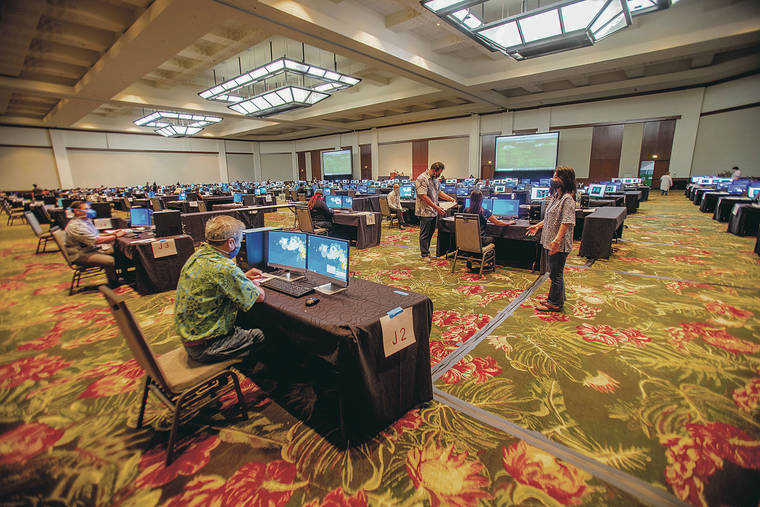Less than one-third of Hawaii’s unemployment claims have been paid since March 1

DENNIS ODA / DODA@STARADVERTISER.COM
Inside the Hawaii Convention Center, legislators and other state employees volunteer to learn how to process the backlog of unemployment claims on April 20. In this room, there are 150 work stations set up to process unemployment claims.
The state Department of Labor and Industrial Relations has paid less than a third of the unique unemployment insurance filings that it’s received since March 1, when COVID-19 Opens in a new tab started wreaking havoc on the state’s economy.
DLIR spokesman William Kunstman told the Honolulu Star-Advertiser today that the department received 221,731 unique filings out of a total of 309,765 unemployment filings received between March 1 and and April 26. Total filings are higher because some frustrated workers have filed more than one application.
DLIR has processed 181,846 or 82% of the unique filings. But so far has only paid claims for 65,252 filings.
As of Monday, DLIR’s backlog consisted of 116,594 in processed claims that were still pending payment and another 11,759 claims with filing errors that haven’t been processed yet.
In March, the department distributed $15.6 million, representing 29,992 weeks of unemployment insurance payments. From April 1 to April 24, DLIR distributed almost another $116.5 million in state unemployment insurance trust money and federal money.
Pre-COVID-19, the average weekly benefit was $515. Kunstman said DLIR hasn’t had time to analyze the average weekly individual benefit during the pandemic. However, it’s likely to be higher, since the department has begun to distribute CARES Act federal plus-up funds, which give claimants an extra $600 weekly for up to a four month period.
Don't miss out on what's happening!
Stay in touch with breaking news, as it happens, conveniently in your email inbox. It's FREE!
Kunstman said the additional capacity provided by the operations at the convention center are attacking the backlogs.
“If eligible, any individual can expect benefits in fifteen days,” he said. “However, if there are any mistakes on an application, then it requires either manual or interactive follow-up. Applications are complicated, it is quite easy to use the DBA (doing business as) as your employer or not report accurate total wages earned.”
Of the pending claims, so far 78,054 have required interactive correction and 38,540 have required manual correction, Kunstman said.




